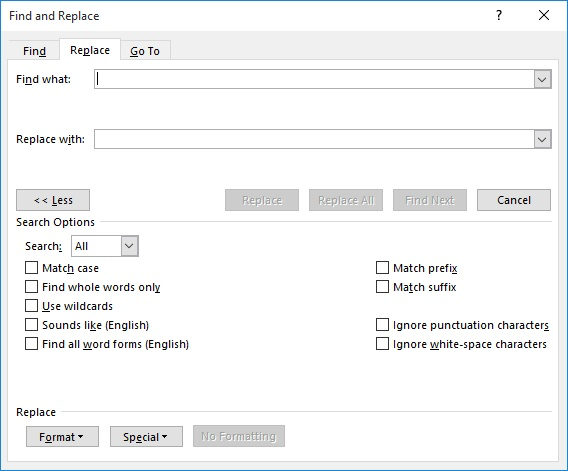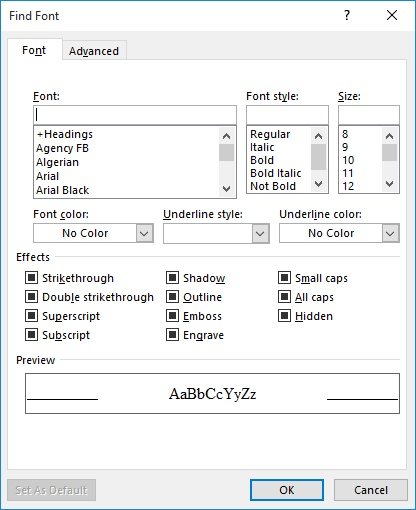Please Note: This article is written for users of the following Microsoft Word versions: 2007, 2010, 2013, 2016, 2019, 2021, and Word in Microsoft 365. If you are using an earlier version (Word 2003 or earlier), this tip may not work for you. For a version of this tip written specifically for earlier versions of Word, click here: Protecting Hidden Text.
Written by Allen Wyatt (last updated December 28, 2024)
This tip applies to Word 2007, 2010, 2013, 2016, 2019, 2021, and Word in Microsoft 365
Hidden text is a great help to those who want to "hide" certain parts of a document, either from viewing or from printing. However, it is not very good for hiding information that you don't want others to see in a document you are distributing. They (the ones to whom you are distributing the document) can display or print hidden text just as easily as you can.
There is no built-in feature of Word that allows you to "lock" hidden text so it can't be viewed. The best solution, then, is to simply remove all your hidden text as a last step before distributing your document. You can do this by using the Search and Replace features of Word, as follows:

Figure 1. The Replace tab of the Find and Replace dialog box.

Figure 2. The Find Font dialog box.
If you find yourself stripping out hidden text quite a bit, you can automate the process by recording a macro that performs the above steps, or you can use the following macro:
Sub StripAllHidden()
Dim rngsStories As Word.StoryRanges
Dim rngStory As Word.Range
On Error GoTo NoDocOpen
Set rngsStories = ActiveDocument.StoryRanges
On Error GoTo 0
'Need to loop through all 'stories' to
'remove hidden text from footnotes, headers,
'etc. as well as body text.
For Each rngStory In rngsStories
With rngStory.Find
.ClearFormatting
.Font.Hidden = True
Call .Execute(vbNullString, False, False, False, _
False, False, True, wdFindContinue, True, _
ReplaceWith:=vbNullString, _
Replace:=wdReplaceAll)
End With
Next
Exit Sub
NoDocOpen:
End Sub
The other advantage of using this macro is that it will also look for hidden text in places where the regular Search and Replace function won't: footnotes, endnotes, headers, footers, etc.
Note:
WordTips is your source for cost-effective Microsoft Word training. (Microsoft Word is the most popular word processing software in the world.) This tip (12438) applies to Microsoft Word 2007, 2010, 2013, 2016, 2019, 2021, and Word in Microsoft 365. You can find a version of this tip for the older menu interface of Word here: Protecting Hidden Text.

Do More in Less Time! An easy-to-understand guide to the more advanced features available in the Microsoft 365 version of Word. Enhance the quality of your documents and boost productivity in any field with this in-depth resource. Complete your Word-related tasks more efficiently as you unlock lesser-known tools and learn to quickly access the features you need. Check out Microsoft 365 Word For Professionals For Dummies today!
Want your text to always appear in uppercase, regardless of how you type it? Word allows you to add formatting to your ...
Discover MoreWhen you set tab stops for a paragraph, you can also specify leader characters to be used with the tab stop. If you want ...
Discover MoreIf you need to format a number so that it appears as currency, it is not as easy to do in Word as it is in Excel. You can ...
Discover MoreFREE SERVICE: Get tips like this every week in WordTips, a free productivity newsletter. Enter your address and click "Subscribe."
There are currently no comments for this tip. (Be the first to leave your comment—just use the simple form above!)
Got a version of Word that uses the ribbon interface (Word 2007 or later)? This site is for you! If you use an earlier version of Word, visit our WordTips site focusing on the menu interface.
Visit the WordTips channel on YouTube
FREE SERVICE: Get tips like this every week in WordTips, a free productivity newsletter. Enter your address and click "Subscribe."
Copyright © 2025 Sharon Parq Associates, Inc.
Comments